Your plans for roses in ground and pots: soil prep & fertilizing?
strawchicago z5
7 years ago
last modified: 7 years ago
Featured Answer
Sort by:Oldest
Comments (105)
strawchicago z5
7 years agolast modified: 7 years agoRelated Discussions
Your potting soil mix for old roses
Comments (11)I've used mushroom compost with in ground roses routinely; and to a lesser extent with potted roses. In my experience, it does not 'harm' roses, but i have sometimes found that the bulk stuff is not as aged as you would like it, meaning it can burn the plants if applied directly to them. You can tell, easily, when the MC is not aged enough. When it is too fresh, you have to spread it out on your driveway (or wherever it has been dumped) and rake it around some to expose it for a while. And cope with the smell a bit. For this reason among others, it is always good to share rose blossoms with your next door neighbors. The other thing to watch out for with MC is that it will push your soil pH to the sweet side. If you are in sweet to neutral soil to begin with, this can be a problem for your plants. Solution is to mix the MC with some acidic matter like pine fines or coffee grounds. For roses growing in pots, the MC can be rather dense and can inhibit drainage. Again, fix is easy--mix with pine fines....See MoreFertilizing Pot Sunk in Ground
Comments (8)Vera you are so lucky with the containers! Here every once in a while I am at Lowes or Wal mart at the right time and get a few. Not even close enough for what I really need. Just spend over 100 Dollars yesterday for pots so I can re pot some brugs. Some tropical trees. Hell I do not know WHY I am growing them. WHERE am I going to put them in the winter? I bought this HUGE Box of MG fertilzer. That has these sprayer refill packets in there. I think there should be around 10 of those in the box. Before that I bought little boxes and I could have sworn too that the numbers on those were different. I guess it is for all different needs folks have. My neighbor ask me yesterday what that plant was that is growing wild in the middle of the tilled area I want to make another flowerbed. It is a Datura inoxia. I told her. She said, you know, when you gave the plants last year to my house for my mom to enjoy, they must have reseeded lol. She has them growing in the one bed and wants to have it more in the middle. I told here I got some left in a small nursery pot from winter sowing and will plant it for her when she goes on vacation today for a week. I told myself that no more indoor sowing with Dats. The germinate a lot better direct sown and also grow into healthier plants. From what I have been watching so far. Can not wait till you share pictures of your beauties that make you happy Lucy...See MoreGarden in Nov. & buy-list & rooting roses & soil prep& what's learned?
Comments (49)Lavenderlace: Your "Doris" day looks almost thornless. Yellow Molineux is also known as low-thorn, and fades less than Julia Child. Pat Henry of Roses Unlimited is very nice. She put up with my changes in order for spring 2017. Her husband died Oct 24, 2015 .. I'm sad for her. Here's what I wrote to Roses Unlimited regarding my order: " Found that The Dark Lady and Golden Fairy Tale both have Rugosa heritage, both are very thorny. My alkaline heavy clay isn't suitable for Rugosa (prefers sandy/loamy). Would it be possible to change that to low-thorn Nahema and Lagerfeld? I also add Barbara Streisand to make up for my sin of changing my order !! Final list is 7 roses for April 2017 delivery: Nahema, Lagerfeld, Barbra Streisand, Sonia Rykiel, Firefighter, Versigny, and Bolero." So happy that Pat Henry approved my changes. I won't make any more changes !! I got poked plenty so I'm happy with low-thorn Nahema, Firefighter, Lagerfeld. Sonia Rykiel has much less thorn than Austin roses. My buy-list consists mostly of roses that died through my zone 5a winter, the only new ones are Barbra Streisand and Lagerfeld....See MoreGround-planting potted roses in their pots?!
Comments (6)The only two reasons I've seen this recommended are for gophers or voles as Sheila said, or for to constrain roses that sucker like gallicas. In both cases, you have to cut out substantial parts of the pot such as drill holes in the sides or cut out the bottom or the rose will trap itself and die from the constriction, if the poor drainage doesn't kill it first. I was advised when planting a particularly invasive gallica to take a full sized outdoor garbage can, cut out the bottom then plant ALL of the garbage can into the ground leaving just a lip above ground, putting the rose in the middle of that. Even with the 4' or so of the garbage can, some gallicas can send out runners below that level. Needless to say I made other plans involving that gallica since I simply can't fathom the size of that hole. For gophers, the better long-term solution I've seen is to bury the rose in a cage of hardware cloth that basically stays around the rose to protect the roots from chewing. Again, this sounds like a lot of work but necessary in some gopher climates. Beyond that, I can't think of any reason for long-term planting of a rose in a plastic pot into the ground. Some people do this temporarily, such as if they're leaving town for weeks with no one to water pots, but it's not a long-term solution. The same goes for those peat pots some roses and perennials come in, even though they're marketed to be planted in the pots. In reality, the peat pot wicks all the moisture away from the plant and it's usually a disaster. Best practice all around is to take the plant out of the pot to plant it, unless you have a big enough pot where you're planning to grow the rose in the (above ground) pot. Cynthia...See Morestrawchicago z5
7 years agolast modified: 7 years agostrawchicago z5
7 years agolast modified: 7 years agolavenderlacezone8
7 years agostrawchicago z5
7 years agolast modified: 7 years agolavenderlacezone8
7 years agostrawchicago z5
7 years agolavenderlacezone8
7 years agostrawchicago z5
7 years agostrawchicago z5
7 years agolast modified: 7 years agostrawchicago z5
7 years agolast modified: 7 years agostrawchicago z5
7 years agolast modified: 7 years agostrawchicago z5
7 years agolast modified: 7 years agolavenderlacezone8
7 years agostrawchicago z5
7 years agolast modified: 7 years agostrawchicago z5
7 years agolast modified: 7 years agostrawchicago z5
7 years agostrawchicago z5
7 years agolast modified: 7 years agoTerri S
7 years agostrawchicago z5
7 years agoVaporvac Z6-OhioRiverValley
7 years agolast modified: 7 years agolavenderlacezone8
7 years agoTerri S
7 years agolavenderlacezone8
7 years agolast modified: 7 years agoTerri S
7 years agostrawchicago z5
7 years agolast modified: 7 years agolavenderlacezone8
7 years agostrawchicago z5
7 years agoKhalid Waleed (zone 9b Isb)
7 years agolast modified: 7 years agostrawchicago z5 thanked Khalid Waleed (zone 9b Isb)strawchicago z5
7 years agolast modified: 7 years agostrawchicago z5
7 years agolast modified: 7 years agostrawchicago z5
7 years agostrawchicago z5
7 years agoAnna
7 years agolast modified: 7 years agoaztcqn
7 years agolavenderlacezone8
7 years agoKhalid Waleed (zone 9b Isb)
7 years agolast modified: 7 years ago
Related Stories

GARDENING GUIDESGet on a Composting Kick (Hello, Free Fertilizer!)
Quit shelling out for pricey substitutes that aren’t even as good. Here’s how to give your soil the best while lightening your trash load
Full Story
GARDENING GUIDESHow to Prep Your Ground for a Healthy New Lawn
Seed or sod that falls on weedy, lumpy soil is a wasted effort. Follow these steps to ensure that your new lawn will thrive
Full Story
GROUND COVERSGround Force: 10 Top Ground Covers for Your Garden
Protect your soil from weeds and drought this summer with a living mulch of ground covers
Full Story
SPRING GARDENINGHow to Grow a Rose Garden in Pots
Everything can come up roses, even without a plot of soil in sight. This step-by-step guide to growing roses in containers shows you how
Full Story
GARDENING GUIDESHow to Pick a Mulch — and Why Your Soil Wants It
There's more to topdressing than shredded wood. Learn about mulch types, costs and design considerations here
Full Story
GARDENING GUIDES10 Solutions for Soggy Soil
If a too-wet garden is raining on your parade, try these water-loving plants and other ideas for handling all of that H2O
Full Story
GARDENING GUIDESCommon Myths That May Be Hurting Your Garden
Discover the truth about fertilizer, soil, staking and more to keep your plants healthy and happy
Full Story
FARM YOUR YARDHow to Get Good Soil for Your Edible Garden
The nutrients in your soil feed the plants that feed you. Here are tips on getting it right — just in time for planting season
Full Story
GARDENING GUIDESHow to Stop Worrying and Start Loving Clay Soil
Clay has many more benefits than you might imagine
Full Story
GARDENING GUIDESHow to Switch to an Organic Landscape Plan
Ditch the chemicals for a naturally beautiful lawn and garden, using living fertilizers and other nontoxic treatments
Full Story





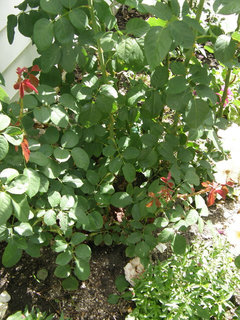

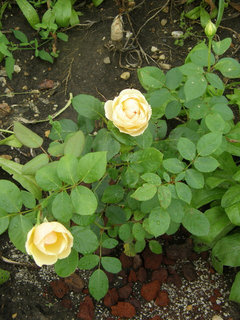
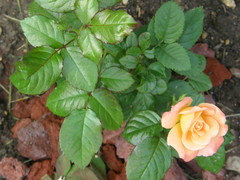
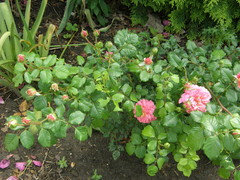
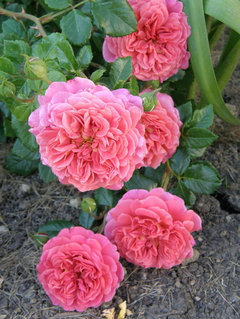
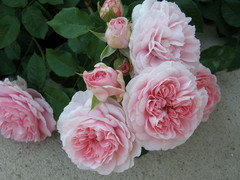


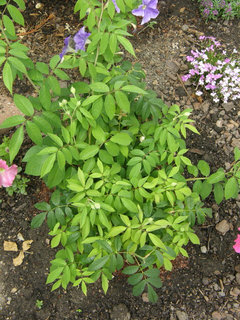
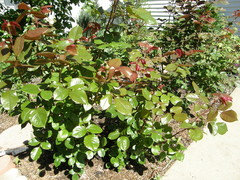

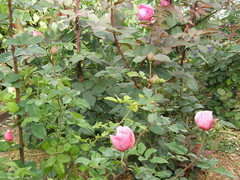

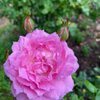


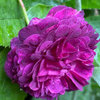
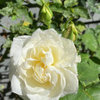
Vaporvac Z6-OhioRiverValley